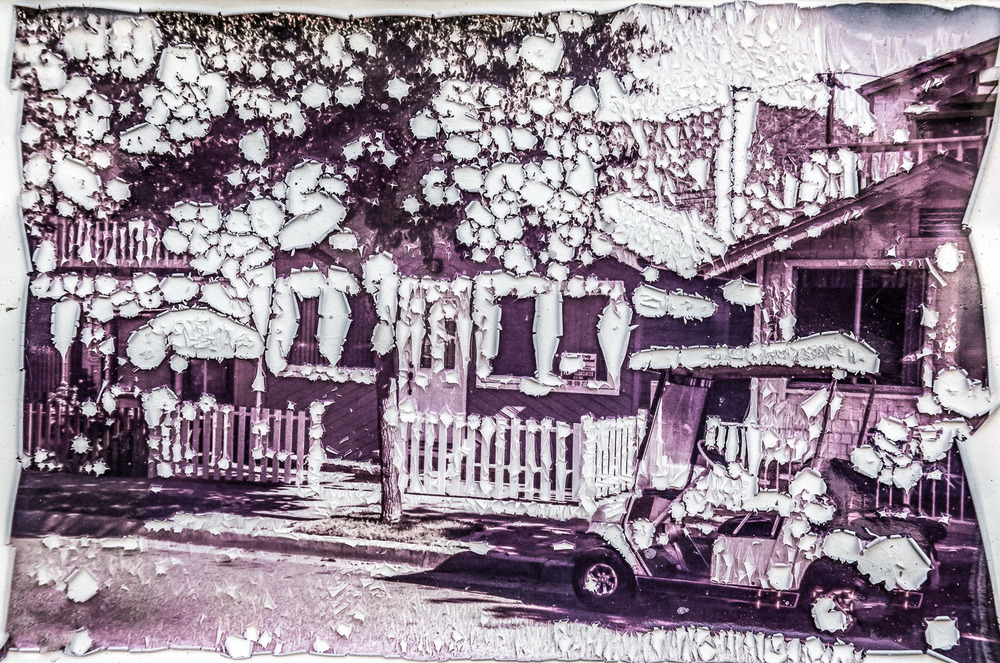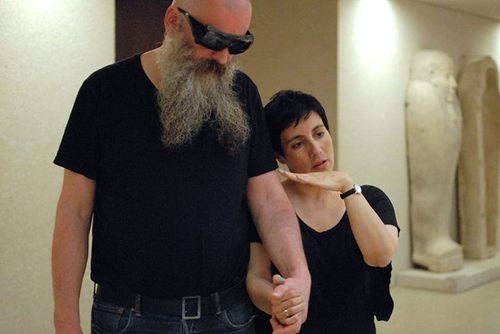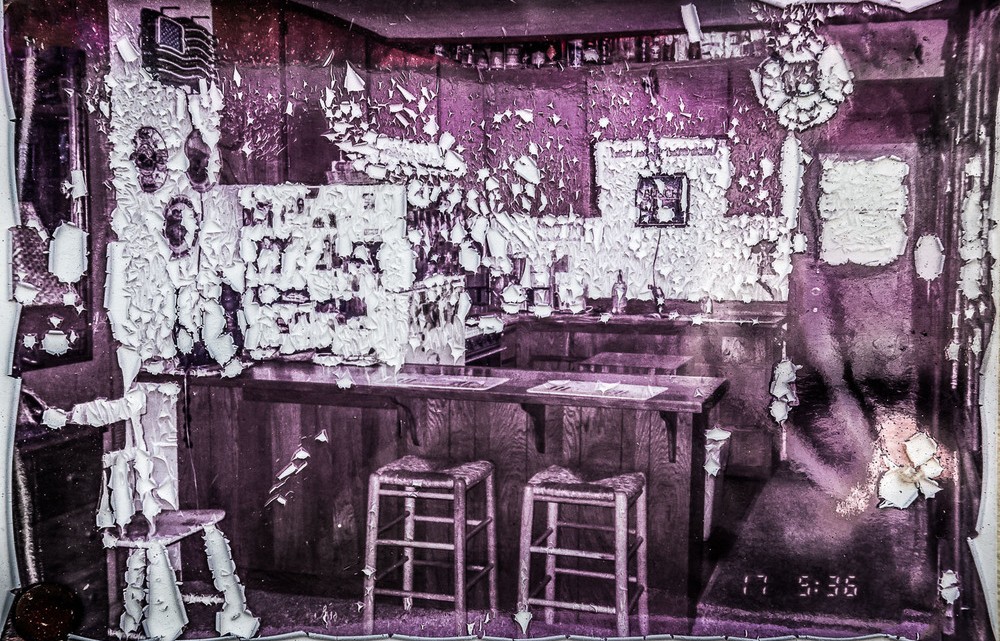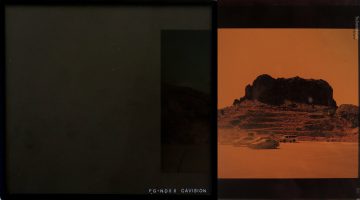Dedicated, as promised, to Dave Hickey
Everyone remembers one’s first time. In 2002, I first heard a lecture by an international curator,1 that is, one of the people who was allegedly the leading figure in contemporary art since the end of the Cold War and the subsequent pre-eminence of “biennials,” large, short-term shows of international artists occurring regularly on every continent except Antarctica. The speaker, the French curator Nicolas Bourriaud, was not so much connected with biennials as with an innovative contemporary art space, the Palais de Tokyo in Paris. There was an air of expectancy, for Bourriaud had recently coined the term “relational art” (or rather art relationnel; a monograph explicating the term was published in French in 1998 and had not yet been published in English at the time of Bourriaud’s lecture2), and art magazines had begun trumpeting this new kind of art as the latest thing, the most “advanced” art of our time. It had something to do with inducing the establishment of human relationships. But what?
Relational art, so we were instructed, is the authentic art of our time. The historical contrast is with pop art, the previous, though alas now outdated, authentic art. We learned that in the not-so-distant past we lived in the world of industrial consumerism. Our primary way of forming identities, expressing and enjoying ourselves, signaling our social status to each other, and creating the quotidian meanings and significances of our lives was through buying from the great menus of the supermarket and the auto dealership, and “consuming” our purchases. The kind of art appropriate to this condition was one that mirrored both this kind of life’s contents and their manner of production, and then held the image of these, a synthesis of consumer icon and mechanical presentation, up for inspection. So the need for an art of silkscreens of coke bottles and movie stars, and of paintings of soup cans and wallpaper, was born. But now, so we were asked to understand, we live in a different world, one of information, and information is something that is made for, and indeed only exists in, communication, i.e., something that passes from person to person. In this passage some “relationship,” albeit thin and ephemeral, is established. So our new authentic art must reflect this condition. We need an art without “objects,” one wherein the artist modestly conceives of herself as setting up a situation wherein information begins to move. But for information to flow, some persons other than the artist must actively take up the information, and then others in turn might respond further to those first active recipients. There is no consummation of the process of artistic making and reception but only the possibility of further extending the passages of communication. Since there is never a “complete” work offered, but only a potentially non-finite process of communication, there is nothing for aesthetic judgment to latch onto. To the extent that such works can be evaluated, judged, and appreciated, they are so in terms of the relative density and duration of the relationships induced by the work. Relational works are only more or less interesting in their appeal to participate, and more or less productive of a density and durability of the relationships induced.
Fortunately, we were further informed, a number of artists have answered the call for this new kind of art, and Bourriaud laid it out for us: Rirkrit Tiravanija, Carsten Höller, and half a dozen others I have forgotten (likely those discussed in the book, including Angela Bulloch and Liam Gillick) were each represented by an image or two of one of their pieces, or rather, part of the piece, which the artist presented as the situation intended to attract viewer-participants and to induce communications in the service of establishing new relationships. In playing out that excruciating ritual lecturing so familiar to today’s art enthusiast, Bourriaud put up an image, identified the piece depicted and the relevant artist, in a few sentences described the project here instantiated, and then pronounced the piece “interesting and productive.” A further merit of the productive in such art was that, since such projects were artistically non-traditional but typically ranged across everyday life and mimicked the activities of some non-artistic practice or institution—such as cooking and serving Thai food, or selling handmade trinkets at a gift shop—these works attracted non-traditional audiences into the formerly insular and elitist world of late-modern and contemporary art.
Bourriaud described one piece as consisting of the display of documentation of what, in the eras before relational art, would have been called a well-meaning switcheroo: an artist solicited funds for a project, and then gave the money instead to a charitable organization of unimpeachable goodness. This was again pronounced “interesting”—but in what sense?—and “productive”—but of what? During the question period, I asked Bourriaud to consider an imaginary piece, identical to the one he described, except that the money went to an evil organization; would not that piece be more interesting in challenging the art world’s complacent liberalism, and more productive in bringing the concerns, if not the proponents, of an evil ideology into the art world? After a bit of back-and-forth, Bourriaud sadly but with an unmistakable vehemence informed me that I was a proponent of the outdated ideology of genius. Egad, had I been exposed again as a young fogey? At the time, I was most struck by the non sequitur (I had said nothing about genius, nor about artistic creation generally), but since then what seems more thought-provoking are the questions whether and why appeal in the discourse about contemporary art is allegedly outdated. More pointedly: Why is this most articulate and thoughtful of curators concerned to insist such? What role does this rejection play in the discourse of the international curator?
For the past two hundred or so years, the term “genius” marks the place of the mystery of artistic making insofar as that process results in superlative works. Though the high evaluation of superlative artworks as necessarily produced by genius is a product of romanticism, with Goethe and Beethoven providing the initial exemplars, something of the concern to conceptualize artistic process is nearly coeval with Western philosophy itself. Plato’s early dialogue Ion provided romantics, in particular Shelley, with one central model of the artist as inspired genius: the character Ion is supremely effective in reciting Homer, but he does so without being able to explain how he does it. The power to move the audience just happens, and he is like a piece of iron magnetized by Homer, and who in turn magnetizes the audience. Ion is also indifferent to the ethical or political import of his art, and is only concerned that he is monetarily rewarded for it. Aristotle’s only surviving treatment of an art, namely tragedy, treats the art as poiesis, a kind of making wherein the product is distinct from the process out of which it arises. An art (or craft; Aristotle’s term is techne) is a rationally organized practice oriented towards the production of some good.3 Poiesis is distinguished from praxis, a higher and more complete kind of action wherein the outcome is among other things the very process itself.4 Process as poiesis, including artistic process, is conceptualized in terms of a particular schema fundamental to Aristotle’s thought, wherein the maker in some sense possesses the form or intelligibility of the product prior to engaging with the material from which the product arises; the producer brings the form to the material. Correlatively, the material is conceptualized as mere stuff, but full of potential, and the process of production is the actualization of some of the material’s potentials. Aristotle also provides a rich array of other materials for thinking about artistic process, in particular with reference to what have been called “autotelic” activities—that is, activities such as playing the flute that are in some sense good in themselves and self-perpetuating. Still, it would perhaps not be a complete exaggeration to say that something like the Aristotelian conception of poiesis has dominated the Western image of the making of artifacts.5
One criticism of the appropriateness of Aristotle’s schema for understanding artistic process that immediately suggests itself, concerns the assumption that the form or intelligibility of the work is somehow unaffected by the process of its materialization. It seems the near-universal experience of artists that the initial motivating conception of the work is drastically transformed in the artist’s encounter with her materials. Indeed, William Kentridge has said that the real work of artistic making only begins when the initiating idea is abandoned. But the conception of the artistic process as the work of genius can readily accommodate this thought, and in many prominent formulations the genius is said to work “unconsciously” or “like a force of nature.” Or, alternatively, in a typical modernist formulation the genius-artist’s process is a work of self-discovery or “journey into the interior.” And it is surely these romantic conceptions, which propose the artwork as a kind of counter to everyday artifacts in their reliance upon “inspiration,” together with the slightly earlier thoughts from Kant that a genius’ significant artistic achievements are necessarily original and do not arise primarily from the application of rules,6 that are the target of Bourriaud’s and other international curators’ rejection.
Two further criticisms might seem to motivate Bourriaud’s rejection of the genius-model and proposal of the relational artist as a replacement: (a) in the genius-conception, agency is wholly the prerogative of the maker. The artist is a form-giving agent who imposes some meaning on an otherwise unformed and meaningless matter; and the audience of the work has no allotted role in the work’s consummation other than exercising a distanced, contemplative, hands-off appreciation. Both material and viewer are passive. (b) The genius-model ignores the historical and political dimensions of artistic making, and short-circuits possibilities for more collective forms of making and reception. The genius’ artistic process is a timeless monologue, unanchored in place, wherein the genius only ever finds aspects of himself. The actual psychological, practical, and institutional embodiment of the genius-model inevitably carries with it further maligned characteristics. Perhaps the most repellent of these for a contemporary sensibility is the stereotypically gendered dynamics wherein active creation is figured as male, and passive reception as female. The genius-model also resonates with 19th-century productivism, which treats production as an unqualified good, and conceptualizes the material Earth as just a collection of resources to be extracted and put to use.
But if one granted that parts of the idea of the artist as necessarily a genius are unsustainable, should one also follow the international curator in rejecting the whole conception? And is Bourriaud’s proposed replacement, the relational artist, sustainable, or even desirable? One of the most central discussions in the visual arts in the past fifteen years has been a tense exchange of criticisms of Bourriaud’s conception between the art historian-cum-theorists Claire Bishop and Grant Kester. In a highly influential article in 2004 Bishop argued that Bourriaud offered no reason to think that the relationships generated by a piece of relational art were valuable or sustainable, and that the relational conception embodied the loss of a valuable political aspect of artworks, their “democratic” role of contesting orthodoxies in favor of creating ephemeral micro-utopias that are “[u]nhinged both from artistic intentionality and consideration of the broader context in which they operate.” When, in 2006, Bishop put similar criticisms to the significantly different model of a new kind of social art proposed by Kester, he responded that Bishop’s criticisms themselves presuppose a kind of insufficiently social conception of art wherein the viewer/theorist can still grasp the meanings placed in work by an artist or artists. On Kester’s own conception of social art, the ongoing contribution of numerous workers, the numbers or identities of whom are not rigidly fixed in advance, remove the (initial) artist from a position of principle, stipulating the meaning, or even the content and shape, of the work. My sketch here of the complex issues is highly truncated, but one can sense the un-decidability of the debate among the competing conceptions.7 Nonetheless, Bishop and Kester would agree with Bourriaud in rejecting the genius-model.
To test this rejection, consider the recent remarkable work of the Bay Area photographer Bijan Yashar. Recently Yashar has exhibited two bodies of work. For one Yashar has photographed details of paintings not to offer the details for inspection but rather to render and stabilize two aspects of the viewing of pictures that are habitually treated annoyances and extraneous to appreciative viewing: the micro-textures of cracks, warping, and uneven applications of the paint; and the occluding pools of light created by spotlights, windows, and other sources of uneven illumination. The density of detail and evenness of focus create a peculiar sort of trompe l’oeil effect in making it seem that the smooth paper of the print itself has the rough texture of what is (merely) depicted thereon. A second group of photographs taken on Santa Catalina Island focus on the weathered surfaces of cracked paint and shreds of accumulated posters. These superlative works merit their own article, but for my limited purpose here I would urge that they fit comfortably within the genius-model (stripped of the repellent accretions noted above) in the way in which they are initiated by a kind of noticing and the fusion of project and perception that undergirds the body of the work. Further, the two bodies of work enrich each other in gaining additional meaningfulness in comparison; the Catalina works’ greater distance from their motif acquires additional significance when contrasted with the close view of the photographs of paintings. Bourriaud and the international curators generally offer no reason to despise the kinds of exemplary significance that arise in an artist’s development, achievement of a characteristic style, and the testing of that style in her practice; their exhibitions show them to be uninterested in this variety of meanings, and their anti-genius discourse jettisons the conceptual resources needed to grasp it.

Bijan Yashar, from Catalina series. Courtesy of the artist.

Gema Álava, Trust Me, 2014. Performance during Month of Performance Art-Berlin.
Now, Bourriaud and the international curators might respond (without a non sequitur) that Yashar’s work, whatever its merits, lacks the foregrounding of collective or inter-subjective production and reception demanded of the authentic art of our time. But consider a second example: the artist Gema Alava has undertaken a project wherein she led a single blindfolded individual through a gallery of a museum and described evocatively the works exhibited therein. She performed this action eleven times with different individuals as the piece Trust Me (2010). A striking feature of this is the novelty and the intensity of the experience of the blindfolded person, who experiences the voluntary and temporary sacrifice of vision as an inducement to heightened visual imagination, and further the intensification of what would otherwise be the auxiliary and unnoticed sense of sound (Alava’s voice), touch (Alava’s hand), and kinesthesis. Inter-subjectivity is foregrounded, but what is in striking contrast to relational art is the continued constitutive role left for a non-participant viewer—that is, most of us whose access to the piece is through photographs of an instance of it. The continued role of the contemplative viewer seems to me responsive to a problematic feature of Bourriaud’s conception of relational art: its lack of wholeness or unity, whether perceptual or imaginary, or even as a regulative idea. For any group of people to form a social unity, they must sense themselves, grasp themselves, and understand themselves to be such a unit.8 The collected co-contributors to a piece of relational art are no more or less members of a collective than a few hundred people who happen to find themselves at a shopping mall at the same time. Alava’s piece, by contrast, induces a structure of complementary imaginative tasks: the blindfolded person knows herself to be visible to a viewer, whether directly or through being photographed, and so can set herself as a secondary task imagining being seen. The non-participant viewer has a central imaginative task imagining what it’s like to be the blindfolded person.
When the international curator pronounces the end of genius, many babies are thrown out with the bathwater. Perhaps one way of seeing what is valuable in the curators’ rejection of genius is to consider it as part of a criticism of the hyper-individualism that afflicts modern and contemporary art. But the curator has neglected to consider the perennial mechanisms and forms of meaning-making in the arts, while accepting the fashionable dogma that contemplative viewing is only a kind of passivity, and solely the artifact of bourgeois art. It’s hard to avoid the suspicion that the curators’ seeming obliviousness is not ideologically motivated, for the evident effect of rejecting the genius-model is to wrest agency from the artist, and the failure to construct a model wherein collective artistic meaning might arise in such a way that it can be grasped by those who produce it and those who appreciate it leaves only one person with a grasp of the work’s meaning: the curator him- or herself. Yashar’s and Alava’s works show, by contrast, that there is nothing obligatory in following the curators’ lead in this.
1) In the previous issue of AQ, I attempted to construct an ideal-typical model of the art world’s power figure, the international curator, followed by a diagnostic of the curator’s notoriously obscure and rebarbative discourse. This essay is a continuation that attempts to excavate and critique the international curator’s assumed conception of artistic making.
2) Nicolas Bourriaud, Esthétique Relationnelle (1998), followed by Relational Aesthetics (2002), both les presses du reel, Dijon-Quetigny
3) Aristotle’s conception of techne seems to draw heavily from Plato’s conception, which is most fully adumbrated in his dialogue Gorgias.
4) See Aristotle, Nicomachean Ethics, VI 4 1140a2-17.
5) See Barry Allen, Artifice and Design, Cornell University Press, Ithaca and London (2008), pp.47-8.
6) Immanuel Kant, Critique of Judgment (1790), section 46.
7) Claire Bishop, “Antagonism and Relational Aesthetics,” October 10, fall 2004, pp. 51-79, quoted at p. 64; and “The Social Turn: Collaboration and its Discontents,” Artforum, February 2006, pp. 178-83, and in an expanded form as chapter one of Artificial Hells: Participatory Art and the Politics of Spectatorship, Verso, London and Brooklyn (2012). Grant H. Kester, The One and the Many, Duke University Press, Durham and London (2011), pp. 31-3.
8) For the classic statement of this point, see Georg Simmel, “How is Society Possible?” (originally 1908) in D. N. Levine (ed.), Georg Simmel: On Individuality and Social Forms, University of Chicago Press, Chicago (1971). For a recent careful explication of the point, see Margaret Gilbert, On Social Facts, Routledge, London and New York (1989), pp. 146-67.



